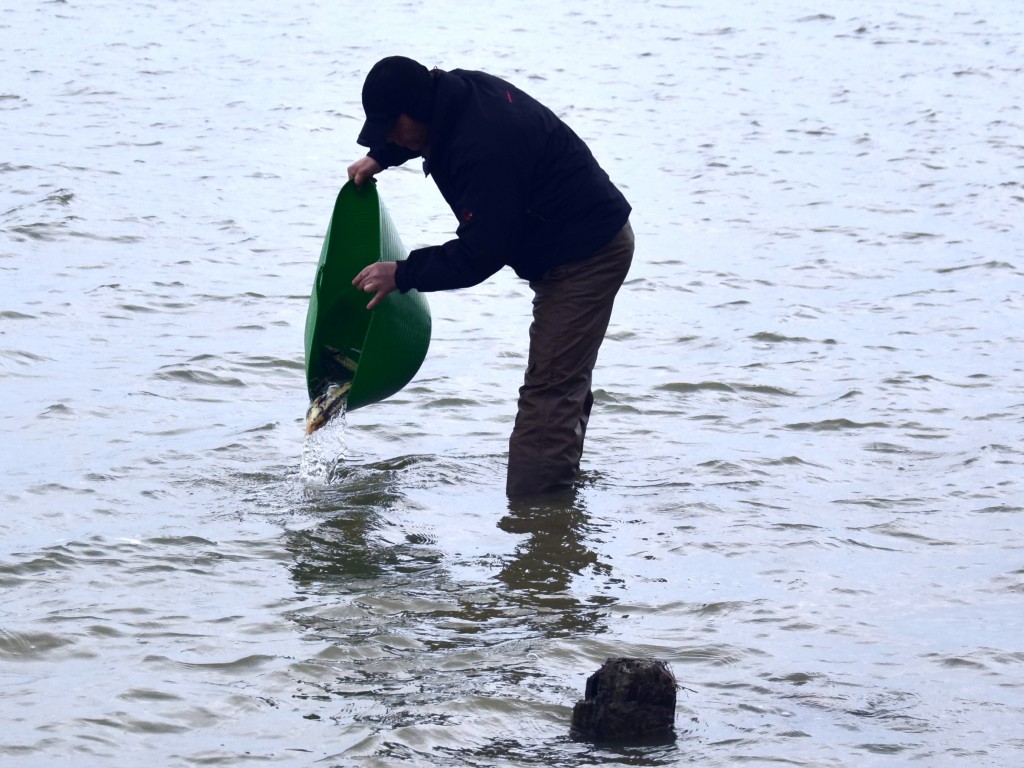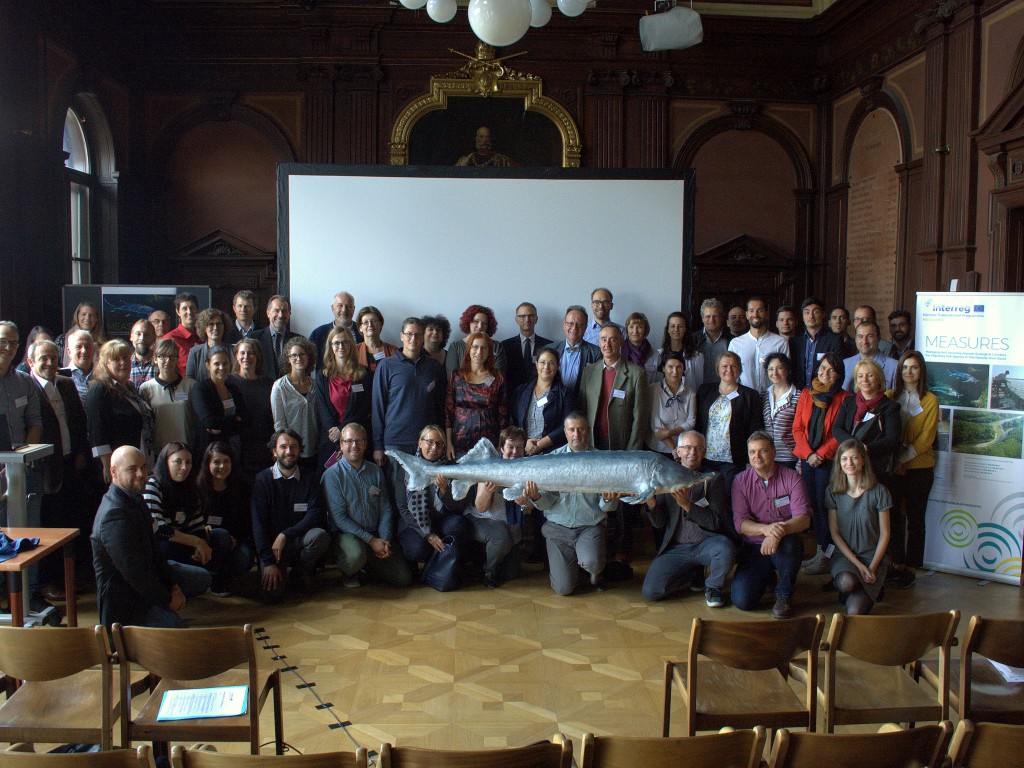MEASURES - Reconnecting migratory fish habitats in the Danube basin
30-08-2021
Sturgeons are flagship animals in the Danube catchment: iconic migratory species, which have existed since the time of dinosaurs, and are symbolic of the Danube’s historical heritage and ecological wealth. However, the ability of sturgeon populations to migrate through the Danube catchment to spawn and feed has been restricted by human activities such as habitat destruction, dam construction and overfishing. MEASURES project aims to change it, improving habitat quality and connectivity along the Danube.
August 30, 2021
 Restocking the Danube River as part of the MEASURES project. Image: MEASURES
Restocking the Danube River as part of the MEASURES project. Image: MEASURES
Cooperation across borders for sturgeon conservation
Cooperation across national borders is crucial in providing effective conservation schemes for migratory fish such as the sturgeon. MEASURES is a collaboration between twelve partners across the Danube region, led by the University of Natural Resources and Life Sciences (BOKU) in Vienna, Austria. The project had four key areas of activity, each accompanied by a fact-sheet. First, the project created a series of ‘Infosystem Eco-Corridors’, based on the establishment of a network of Danube stakeholders across 8 partner countries. A new MEASURES Information System (MIS) was developed, hosting online information on migratory fish and habitats in the Danube basin, linked to the Freshwater Information Platform and the Danube Future Knowledge Base.
Second, project researchers undertook fieldwork and data collection to map potential sturgeon habitats along the Danube and its tributaries. This resulted in a publication, the Danube Migratory Fish Habitat Manual, which detailed key sturgeon habitats in the basin, and the methods used to map them. The habitat mapping activities in MEASURES have already contributed to the latest draft of the Danube River Basin Management Plan.
Third, the project undertook a series of activities to strengthen populations of migratory fish populations in the Danube basin. These included restocking programmes for Russian sturgeon and sterlet, alongside the development of an eDNA sampling method to monitor their populations (activities featured in a recent issue of the World Wildlife Magazine). Project researchers collected gene stocks of sturgeon populations from broodstock and ex-situ samples for future stocking, which is hoped to be undertaken through a follow-up project, LIFE–Boat 4 Sturgeons.
Fourth, MEASURES published a new Strategy for the Danube Ecological Corridor, which built on project findings to outline how migratory fish habitats can be restored and reconnected through the Danube basin. The MEASURES Strategy is designed to help support and improve environmental management plans and legislation at different scales throughout the basin, providing suggestions for specific conservation and restoration activities.
"The MEASURES project involved 24 partners from 13 countries cooperating to secure threatened riverine fish species. Our three year cooperation allowed major steps in gaining new knowledge on migratory fish in the Danube River Basin and transferring these insights into practice. MEASURES is an excellent example of cross-sectoral international collaboration to address an important aspect of freshwater biodiversity.”
Thomas Hein, Project co-ordinator
 The MEASURES project team. Image: MEASURES
The MEASURES project team. Image: MEASURES
Article courtesy of The Freshwater Blog.
